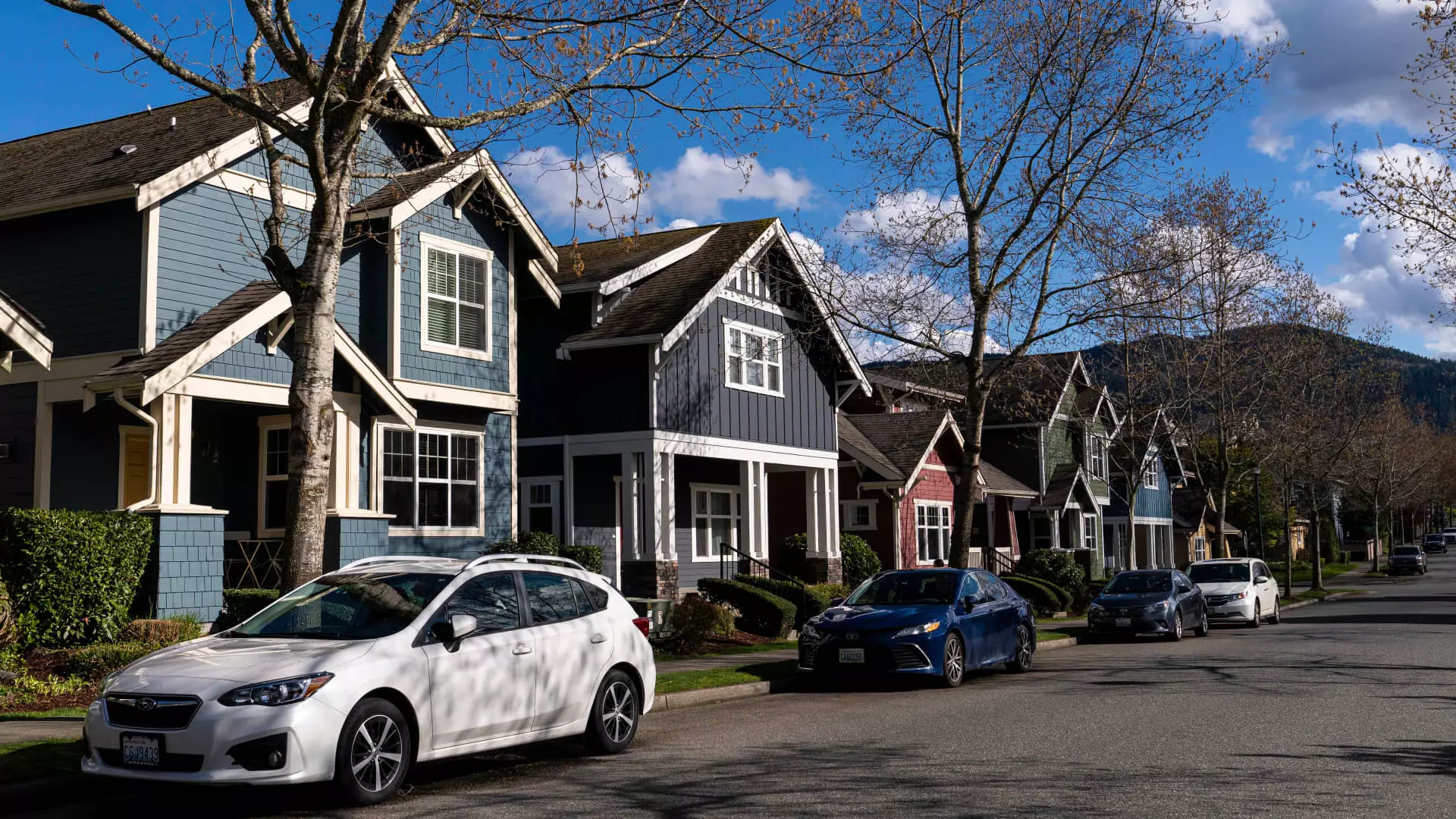The housing market is currently facing significant challenges, with sales of previously owned homes hitting a 30-year low. In May, existing home sales were essentially flat, dropping by 0.7% from April to a seasonally adjusted annualized rate of 4.11 million units. This represents a 2.8% decrease from the previous year. The sluggish sales pace can be attributed to a number of factors, including high mortgage rates and soaring home prices.
One of the major deterrents for potential homebuyers is the high mortgage rates prevailing in the market. In April, the average rate on a 30-year fixed loan rose from just below 7% to over 7.5%, before settling back slightly in May. Currently, the rate stands at around 7%. The sharp increase in mortgage rates has made homeownership less affordable for many buyers, leading to a stagnation in sales activity.
Another concerning trend in the housing market is the sudden jump in the inventory of homes for sale. In May, the inventory increased by 6.7% month-over-month and was 18.5% higher compared to the previous year. Despite this surge in available homes, the supply remains low relative to demand, with only a 3.7-month supply at the current sales pace. While an increase in inventory is expected to help boost sales and moderate price gains, it remains insufficient to meet the growing demand for housing.
The surge in demand and limited supply has led to a substantial increase in home prices. In May, the median price of an existing home reached a record high of $419,300, representing a 5.8% year-over-year increase. This price escalation has been evident across all regions, with prices soaring since October 2022. The affordability of homes has become a major concern for buyers, as mortgage payments have more than doubled in the past five years, owing to both rising rates and inflated home values.
The housing market dynamics vary significantly across different price segments. Sales of homes priced below $250,000 have declined compared to the previous year, while homes priced between $250,000 and $500,000 saw only a marginal increase. On the other hand, sales of properties priced between $750,000 and $1 million soared by 13%, while sales of homes priced over $1 million jumped by nearly 23%. This disparity in sales performance highlights the uneven impact of market conditions on different buyer segments.
Cash transactions continue to dominate the market, accounting for 28% of sales. First-time buyers represent 31% of sales, indicating a slight increase from the previous year. Despite higher prices and increased competition, two-thirds of homes are being snapped up in less than a month of being listed. However, there has been a rise in the number of listings that are lingering on the market, emphasizing the importance of pricing properties competitively and ensuring they are in good condition to attract buyers.
The current state of the housing market presents a challenging landscape for both buyers and sellers. High mortgage rates, limited inventory, escalating prices, and shifting buyer behavior patterns are shaping the dynamics of the market. As we navigate through these uncertain times, understanding these trends and adapting to the changing market conditions will be essential for all stakeholders in the real estate industry.

